Some palms can take frost and snow. Some grow very well in central Europe. The palm family includes about 2.400 species, mostly distributed in tropical and subtropical regions. Most species need warm temperatures but few exceptions occur in the cooler areas of the globe, at higher altitudes or higher latitudes. Hardy palms come from Chile, New Zealand, Morocco, Northern Mexico or China.
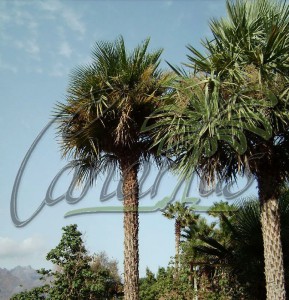
Copernicia alba from Argentina is moderately hardy, to about – 8 C
Most hardy palms bear palmate (fan-shaped) leaves. Fewer have pinnate leaves, and the hardiest are Jubaea and Butia. Most are solitary (single trunked) palms, some are clumping. Collectors will love the frost-hardy genus Butia with about 14 species, and Trachycarpus with nine species and a number of forms and varieties.If you are in a cold area, you might be restricted to use less than ten palm species. Just learn all you can about them and use them well in your landscape. After all, the average tropical garden has less than ten palm species! Plant palms in groups, in lines, in large pots, on the slope, by the pond. Just chose your palm species and enjoy the tropical effect in your garden.Hardiness is given for adult palms. Young plants are often less resistant to cold. If you are purchasing young palms, give them some protection in winter during a few years. Grow well your palms. In northern climates most palms will benefit of exposure to full sun and protection from northerly winds. Check our tips to grow Tropical plants in Cold Europe.
Canarius offers many species able to resist snow and frost.Come and visit the Palm Section of our Shop. We ship to anywhere in Europe.
Some cold-hardy species, according to hardiness:
-18 to -21 C (-0.5 to -6 F):
The hardiest of all palms are two North American species. Rhapidophyllum hystrix and Sabal minor. They are both small fan-leaved palms that can fit in any garden. Rhapidophyllum has long black needles, Sabal minor has a short underground stem. They can be tried virtually anywhere in Europe, as they have been grown successfully from Greece to Scandinavia. Rhapidophyllum can be too slow if summers are not warm enough.
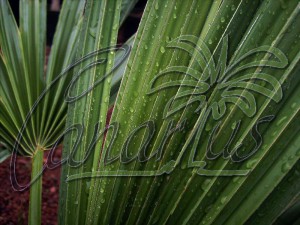
A leaf of the fully hardy Sabal minor. This palm can take about – 21 C.
-12 C to -18 C (-10.5 to -0.5 F):
Jubea chilensis is the most majestic of all hardy palms. It is all about size, because Jubea has the largest trunk of all palms. It is a pinnate (feather-leaved) palm native to high elevations in Chile. Palm collectors in the tropics dream of having one Jubaea, but it needs some cold to thrive. Fruits are edible nuts and taste much like coconut.Various Trachycarpus species, can take hard frosts, such as T. fortunei, T. nanus, T. takil, T. princeps, T. wagnerianus. Different plants in the N American genus Sabal are hardy, like S. uresana and Sabal x texensis, which the natural cross between Sabal minor and Sabal palmetto. Some more species resist to only – 14 C (6.8 F): Trachycarpus oreophilus and T. geminisectus and the beautiful Trithrinax campestris from Argentina, with silvery stiff, thick, leaves. Nannorrhops can take hard frosts if it is well drained.
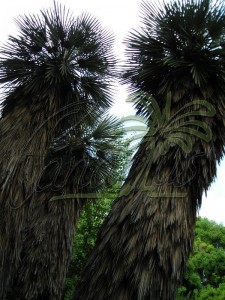
Trithrinax campestris is hardy to about -15 C
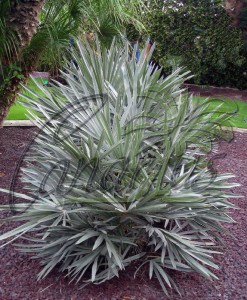
Juvenile Trithrinax campestris with silvery leaves
-9 to -12 C (-15.5 to -10.5 F):
More and more species can be grown where temperatures do not fall too hard. Braheas are blue leaved desert fan palms from Mexico. The most popular are the stately Brahea armata and the low, trunkless B. decumbens. Another desert palm from the Middle East is Nannorrhops ritchiana. Canarius offers different forms originating in different countries. Some forms show incredible grey-white leaves.The exciting genus Butia, has elegant, arching pinnate leaves. About 14 species can take hard frosts, some of the most desirable are Butia eriospatha, B. capitata, B. odorata, B. paraguayensis, B. purpurascens, B. yatay. Some butias bear delicious sweet fruits, juicy and aromatic.Few rainforest palms tolerate hard frosts. Some Mexican Chamaedorea species are hardy, such as Chamaedorea microspadix and Chamaedorea radicalis. Their fine foliage adds a delicate touch to any garden, patio or conservatory. A strong, hardy palm is the Mediterranean fan palm, Chamaerops humilis. It is a clumping fan palm native to SW Europe and Morocco. The moroccan form is known as Chamaerops humilis cerifera. It has beautiful waxy-blue foliage and it is very hardy as it comes from the higher Atlas Mountains. More species of Trachycarpus can be planted outdoors if temperatures never go below 12 C : T. latisectus, T. martianus, T. oreophilus and T. princeps.The genus Phoenix includes the famous date palm, Phoenix dactylifera and the Canary Island palm, Phoenix canariensis. They do take frost, like some other members of the genus: P. loureiroi, P. humilis, P. sylvestris, P. theoprastii. More and more Sabal species can be grown if frosts are not too hard. The following species can take about – 10 C: Sabal domingensis, S. etonia, S. maritima, S. mexicana, S. palmetto, S. rosei. Hardy palms from North America are the dwarf Serenoa repens and the tall, stately whashingtonias, with two species: Washingtonia filifera and W. robusta. A different fan palm is Trithrinax brasiliensis, with large, round, flat fan leaves and beautiful, tropical-looking, yellow flowers.
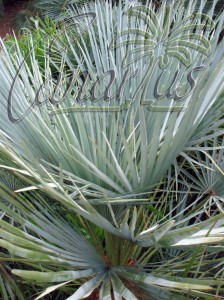
Frost hardy Chamaerops humilis cerifera from the mountains of Morocco
-2 to -9 C (-28.5 to -15.5 F):
Lots of new genera and species can be tried in milder areas: Arenga engleri and A. micrantha resist to about – 7 C. Different species of Livistona, Parajubaea, Syagrus, Acrocomia aculeata, Copernicia alba. If it really never goes below -4 C, Rhopalostylis from New Zealand, some Caryota species from Asia the wax palms from the Andes, Ceroxylon, such as C. andinum and C. amazonicum, a number of Chamaedorea species, some of the high-elevation Dypsis from Madagascar, the showy, large, grey leaved Bismarckia nobilis, or the fabulous red-leaf palm, Chambeyronia macrocarpa.
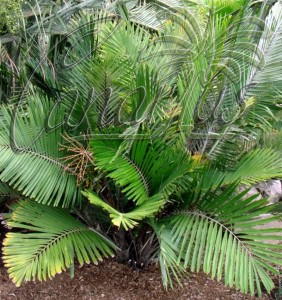
Arenga engleri can take frost at – 9 C
Never below -2 C (never below -28.5 F):
The list is just too long. 200 or more palm species can be grown outdoors in lucky climates. If you are in located in the coastal Mediterranean, many of the palms offered by Canarius will grow for you.
You can buy all these palms and many more in the Palm Section of our Shop – We ship to anywhere in Europe.
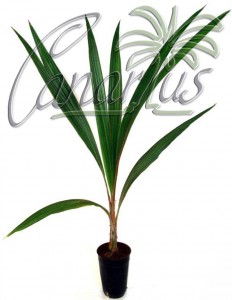
This is our Parajubaea torallyi torallyi in a 12×14 cm pot

Our Trachycarpus takil in a 12 cm pot, ready to be shipped

























